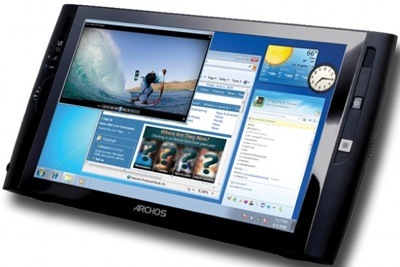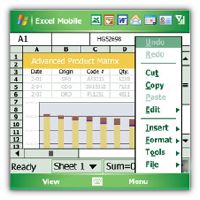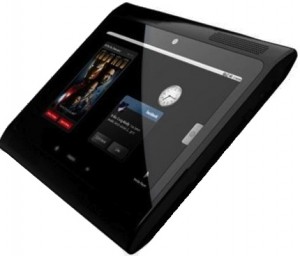Is there a tablet in your future?
If you read the news sites or visit many tech blogs, it seems that the newest computer gadget threatening to invade the market is the tablet computer. This year’s CES showed that many different models are slated (so to say) to be launched in this calendar year.
But if these tablets do come on the market, will they catch on? And will you be getting one anytime soon? Well, to try to answer that question, let’s look at both tablet computing history and other items to market that closely paralleled what we are now seeing with tablets.
Tablet Evolution, not Revolution
First, let’s just lay this on the table – tablet computers are not new. A few years ago tablet computers burst onto the scene with a lot of promise, only to be relegated to niche markets and specific uses.
While it showed to be quite interesting, it is my opinion that the implementation was not right. The Windows based pen computer was virtually a windows computer with a few goodies thrown in for the pen. Sure, journal and the sticky notes were definitely interesting, and it allowed a lot of freedom when using the pen. But merely replacing the mouse with a pen and adding a few specialized functions is probably a good entry into the “How not to introduce a new computing paradigm” playbook.
The pen took longer to enter data than a keyboard did, and the interface was designed for a mouse. The tablet computer suffered, despite a few holdouts that actually liked a pen computer (I still love my TC1100).
Where they are now
As mentioned, CES 2010 brought out a lot of tablets that will soon see the light of day. And the majority of them are running Windows 7. Aha, isn’t that an OS designed for a mouse? Did we not just go through that with the last round of pen tablets?
The answer, sad to say, is yes. Windows with a touch screen is, in this writer’s opinion, not a finger friendly OS. Sure, it does finer touches now – multiple simultaneous touches, even. But even a quick look at a screen shows you that they are using the same screen mechanics as a mouse does for the most part.
The interface is not designed for a pen, much less a finger. Yet the bulk of the new tablet market is going to be running this OS, apparently. So, why would the average person want to forgo the mouse and use their finger instead?
The answer is this – they have no reason to do so. If the tablet computing paradigm continues to be introduced with a mouse designed interface, then we can stick a fork in it. Outside of a few niche areas (and I am in one of those, to be sure), you can call tablet computing done.
Tablet Computers, From the Ground Up
So, if sticking Windows 7 on a tablet with touchpad support is not going to make it work, then what is? Well, the answer to that might just be in recent history. Recent Mobile history, to be exact.
Windows Mobile has seen a good run, and from its early inception to the latest version (sans Windows Mobile 7, if that ever does see the light of day), it has sold in the millions. They precede a lot of the current competition in mobile OS, and they carry with it the branding of the world’s most popular desktop operating system. They should have the market.
But they don’t, and a few relatively new competitors are ripping through the market, leaving Windows Mobile behind in their dust, at least for now. What did they do wrong?
Simple – they implemented an interface that was too much like the desktop. The mouse-evolved screen elements took up a lot of precious screen real estate. As a long time user of Windows Mobile (also known by the more correct name, Pocket PC), I can attest that you needed a good stylus and a steady hand to make use of the interface. It may have been labeled mobile, but you had to stop to see what you were doing.
But recently a competitor released a phone that had an interface designed from the ground up to be finger centric. The iPhone, by Apple, showed us exactly how you could scroll a list using a touch screen without a single tiny scroll bar on the side. Suddenly a finger would actually work, and screen elements such as drop down lists were accommodating to the user, not the other way around. The result was a great success.
On its heels, computing giant Google has released its Android operating system, again designed to be finger friendly from the ground up. The Android name is finding its way onto many different handsets, and the end result is that a touch screen device is becoming accepted as the normal smartphone of choice, no stylus required.
What has changed
So, how does this affect tablet computers? Well, if the rumor mill proves to be true, then there are new tablets coming on the market that run these operating systems. This is perhaps the biggest difference from the earlier attempt at making tablets a mainstream device.
A tablet device running an interface that is finger-centric by design, not mouse-centric with allowances, is in my opinion enough to turn the tide and opens the door for these sleek machines.
It really does come down to this – it must be conveniently easy to use. Otherwise the new crop of tablets are again headed for the niche markets and power users only. You have to give the users a reason to use a tablet, not let them make do with a tablet.
Is a tablet in your future
With that said, I am curious as to how the average computer user feels about the new crop of tablets. Would you want a Windows 7 device so that you can run existing software? Or would you want a new design that allows a new software design to interface to your lifestyle? Take a moment to answer our poll, and we can compare what users want and expect from a tablet device.
If you read the news sites or visit many tech blogs, it seems that the newest computer gadget threatening to invade the market is the tablet computer. This year’s CES showed that many different models are slated (so to say) to be launched in this calendar year 2010.
But if these tablets do come on the market, will they catch on? And will you be getting one anytime soon? Well, to try to answer that question, let’s take a look at tablet computing history.
Tablet Evolution, not Revolution
First, let’s just lay this on the table – tablet computers are not new. A few years ago tablet computers burst onto the scene with a lot of promise, only to be relegated to niche markets and specific uses.
While it showed to be quite interesting, it is my opinion that the implementation was not right. The Windows based pen computer was virtually a windows computer with a few goodies thrown in for the pen. Sure, journal and the sticky notes were definitely interesting, and it allowed a lot of freedom when using the pen. But merely replacing the mouse with a pen and adding a few specialized functions is probably a good entry into the “How not to introduce a new computing paradigm” playbook.
The pen took longer to enter data than a keyboard did, and the interface was designed for a mouse. The tablet computer suffered, despite a few holdouts that actually liked a pen computer (I still love my TC1100).
Where tablets are now

As mentioned, the CES 2010 brought out a lot of tablets that will soon see the light of day. And the majority of them are running Windows 7. Aha, isn’t that an OS designed for a mouse? Did we not just go through that with the last round of pen tablets?
Sad to say, we did. Windows with a touch screen is, in this writer’s opinion, not a finger friendly OS. Sure, it does finer touches now – multiple simultaneous touches, even. But even a quick look at a screen shows you that they are using the same screen mechanics as a mouse does for the most part.
The interface is not designed for a pen, much less a finger. Yet the bulk of the new tablet market is going to be running this OS, apparently. So, why would the average person want to forgo the mouse and use their finger instead?
The answer is this – they have no reason to do so. If the tablet computing paradigm continues to be introduced with a mouse designed interface, then we can stick a fork in it. Outside of a few niche areas (and I am in one of those, to be sure), you can call tablet computing done.
Tablet Computers, From the Ground Up
So, if sticking Windows 7 on a tablet with touchpad support is not going to make it work, then what is? Well, the answer to that might just be in recent history. Recent Mobile history, to be exact.
Windows Mobile has seen a good run, and from its early inception to the latest version (sans Windows Mobile 7, if that ever does see the light of day), it has sold in the millions. They precede a lot of the current competition in mobile OS, and they carry with it the branding of the world’s most popular desktop operating system. They should have the market.
But they don’t, and a few relatively new competitors are ripping through the market, leaving Windows Mobile behind in their dust, at least for now. What did they do wrong?

Simple – they implemented an interface that was too much like the desktop. The mouse-evolved screen elements took up a lot of precious screen real estate. As a long time user of Windows Mobile (also known by the more correct name, Pocket PC), I can attest that you needed a good stylus and a steady hand to make use of the interface. It may have been labeled mobile, but you had to stop to see what you were doing.
A New Interface
But recently a competitor released a phone that had an interface designed from the ground up to be finger centric. The iPhone, by Apple, showed us exactly how you could scroll a list using a touch screen without a single tiny scroll bar on the side. Suddenly a finger would actually work, and screen elements such as drop down lists were accommodating to the user, not the other way around. The result was a great success.
On its heels, computing giant Google has released its Android operating system, again designed to be finger friendly from the ground up. The Android name is finding its way onto many different handsets, and the end result is that a touch screen device is becoming accepted as the normal smartphone of choice, no stylus required.
Interface Impact
So, how does this affect tablet computers? Well, if the rumor mill proves to be true, then there are new tablets coming on the market that run these operating systems. This is perhaps the biggest difference from the earlier attempt at making tablets a mainstream device.

A tablet device running an interface that is finger-centric by design, not mouse-centric with allowances, is in my opinion enough to turn the tide and opens the door for these sleek machines.
It really does come down to this – it must be conveniently easy to use. Otherwise the new crop of tablets are again headed for the niche markets and power users only. You have to give the users a reason to use a tablet, not let them make do with a tablet.
Is a tablet in your future?
With that said, I am curious as to how the average computer user feels about the new crop of tablets. Would you want a Windows 7 device so that you can run existing software? Or would you want a new design that allows a new software design to interface to your lifestyle? Take a moment to answer our poll, and we can compare what users want and expect from a tablet device.




20 comments for “Is There A Tablet Computer In Your Future?”